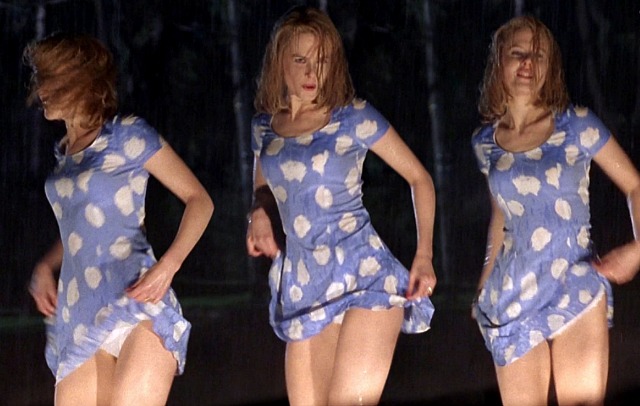I was fairly taken with Stacey Wilson Hunt‘s “To Die For at 25: An Oral History of the Risky Indie-Meets-Studio Triumph“, which posted earlier today.
Gus Van Sant‘s 1995 film, based on the 1990 Pamela Smart husband-murder case, struck most of us as a sardonic suburban drama about careless idiots rather than a head-turning noir comedy. It made you smirk from time to time, but it was never intended to be “amusing.” Unless you’re a misanthrope.
The article sells the idea that To Die For is some kind of masterpiece, but my recollection is that it was more in the realm of good — handsomely shot and edited (it was certainly one of Van Sant’s better looking films) and very dry and matter-of-fact — rather than great. The tone was cool and somewhat dismissive of the none-too-bright characters (Nicole Kidman‘s especially), and the feeling at the end is “jeez, what a bunch of delusionals.” The perpetrators, I mean.
We all admired Kidman’s performance as the robotic, icy-mannered Smart, and particularly the naivete and vulnerability conveyed by 20 year-old Joaquin Pheonix, who played Smart’s teenaged lover, Jimmy Emmett, and the killer of her husband Larry (Matt Dillon).
The two indelible images, for me, are (a) Phoenix’s lovestruck, heartbroken expression while being grilled by the cops about his motive for killing Larry, and (b) the frozen face of Smart, killed by a mafia assassin and carried along by river currents, captured through thin ice.
To Die For premiered in Cannes on 5.28.95, opened in Canada on 9.29.95 and then a week later — 10.6.95 — in the States. It cost $20 million to make but only earned $21.3 million at the end of the day,
I haven’t seen it since the Westwood all-media screening, but I’ll be watching it again tonight. Why haven’t I wanted to re-watch until now? I think I’ve explained that.

